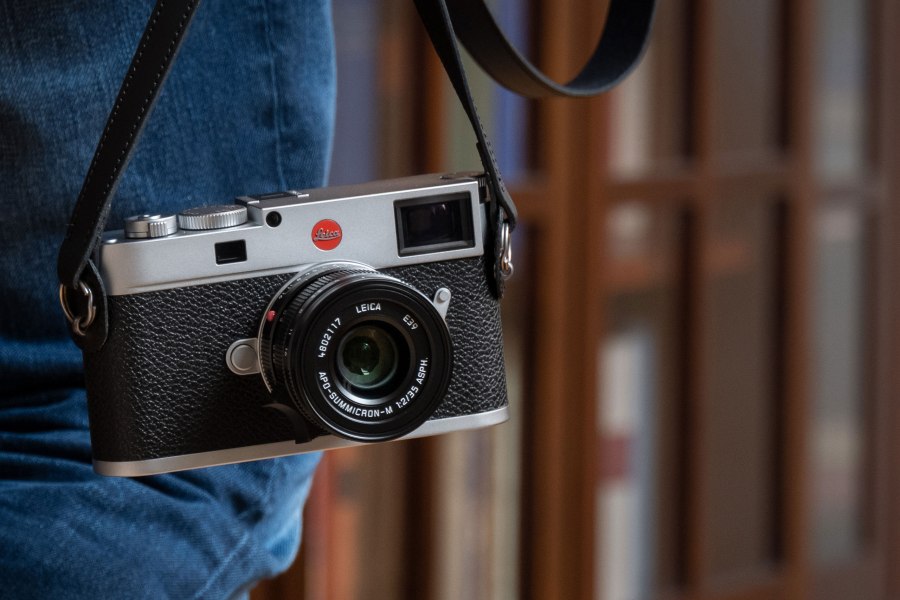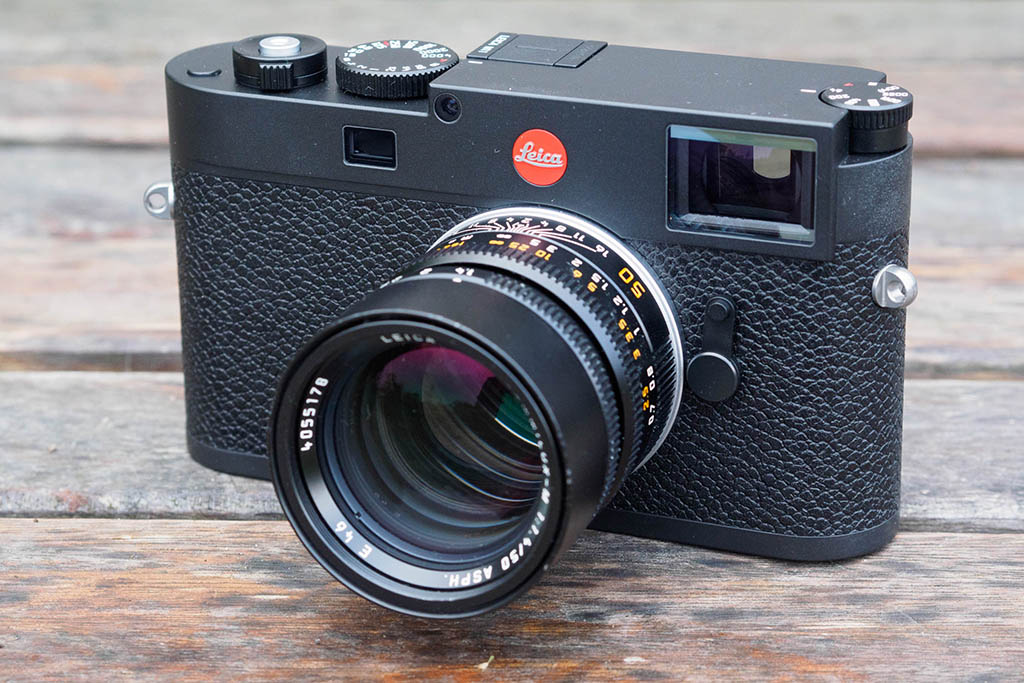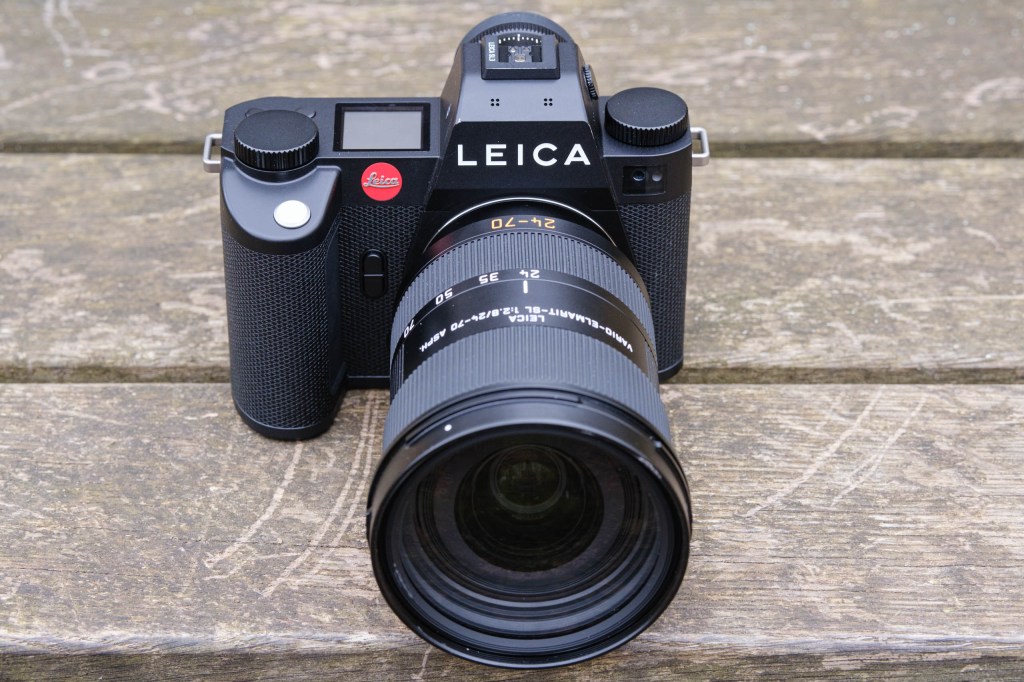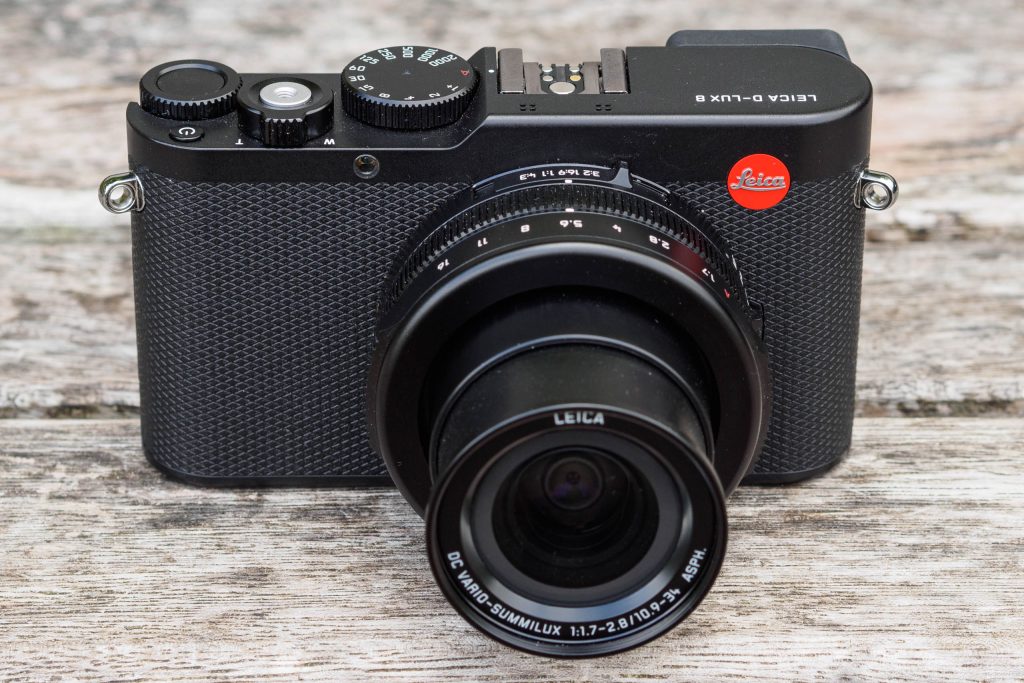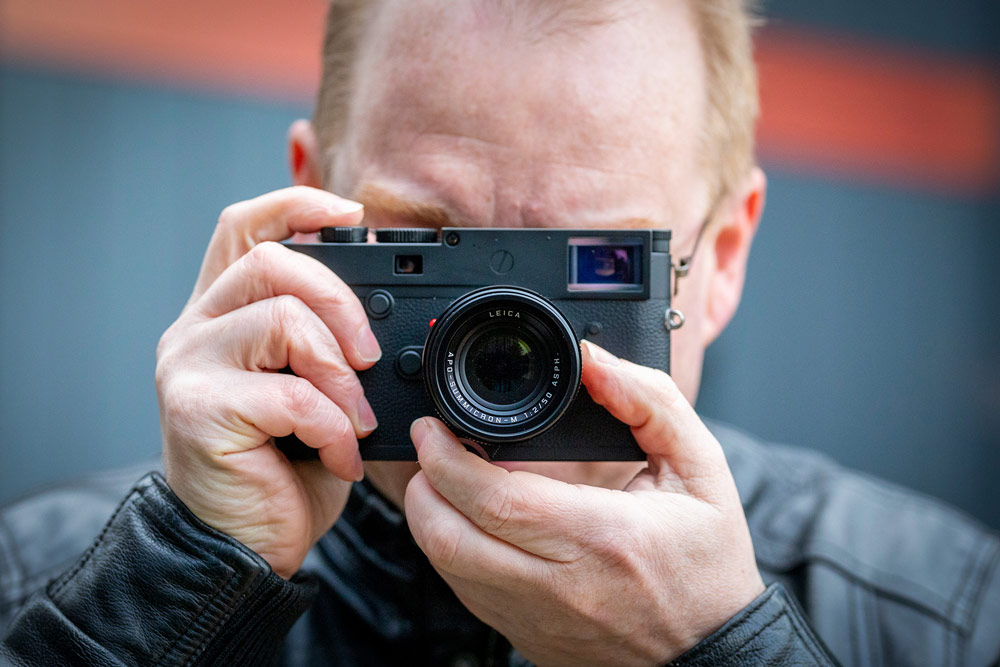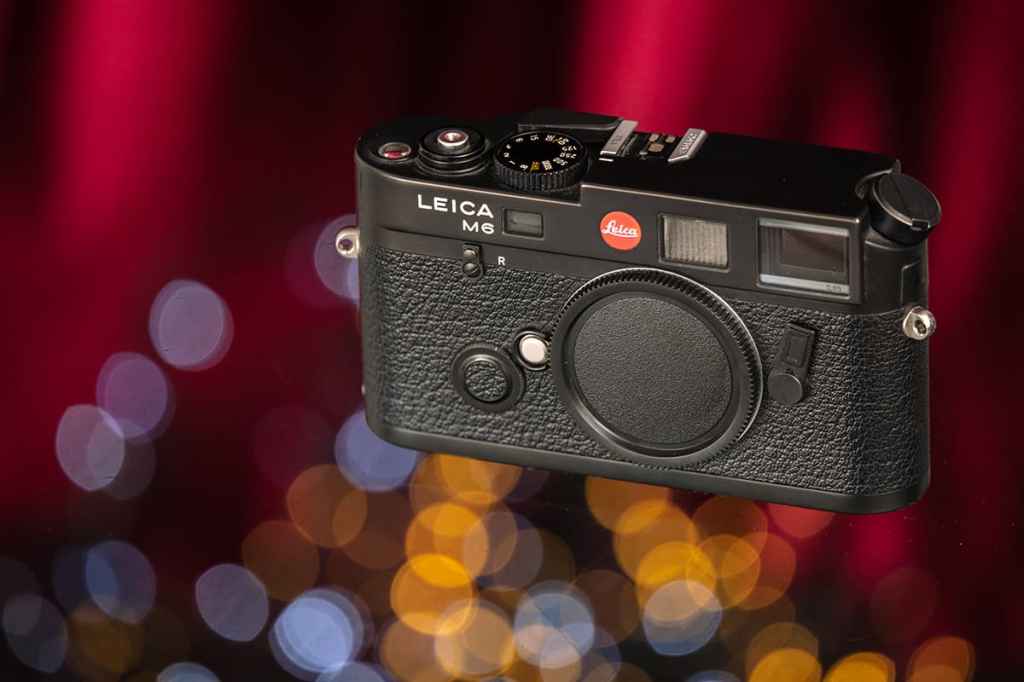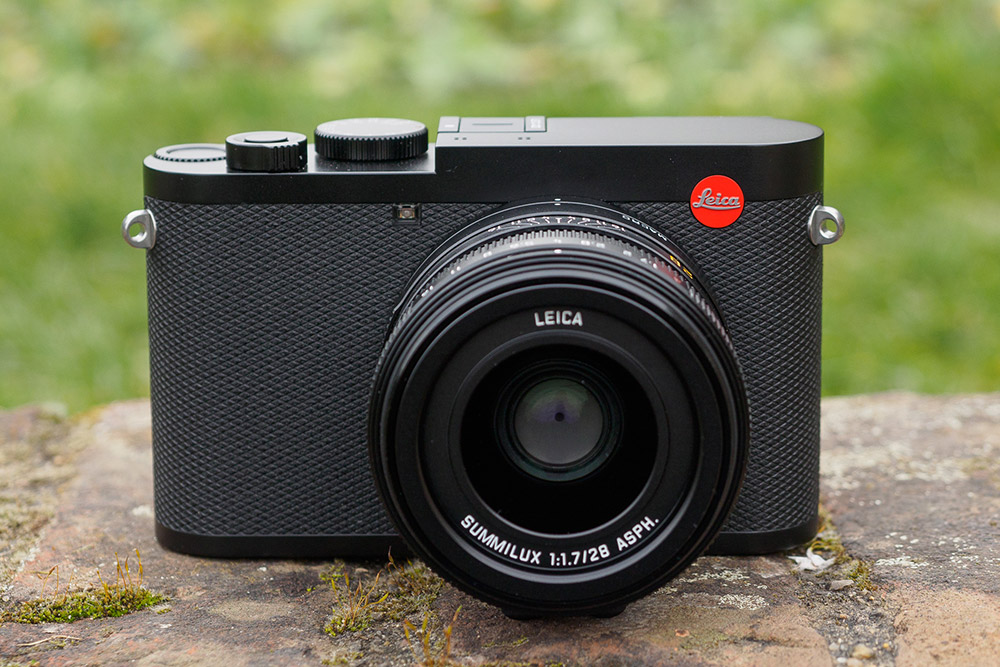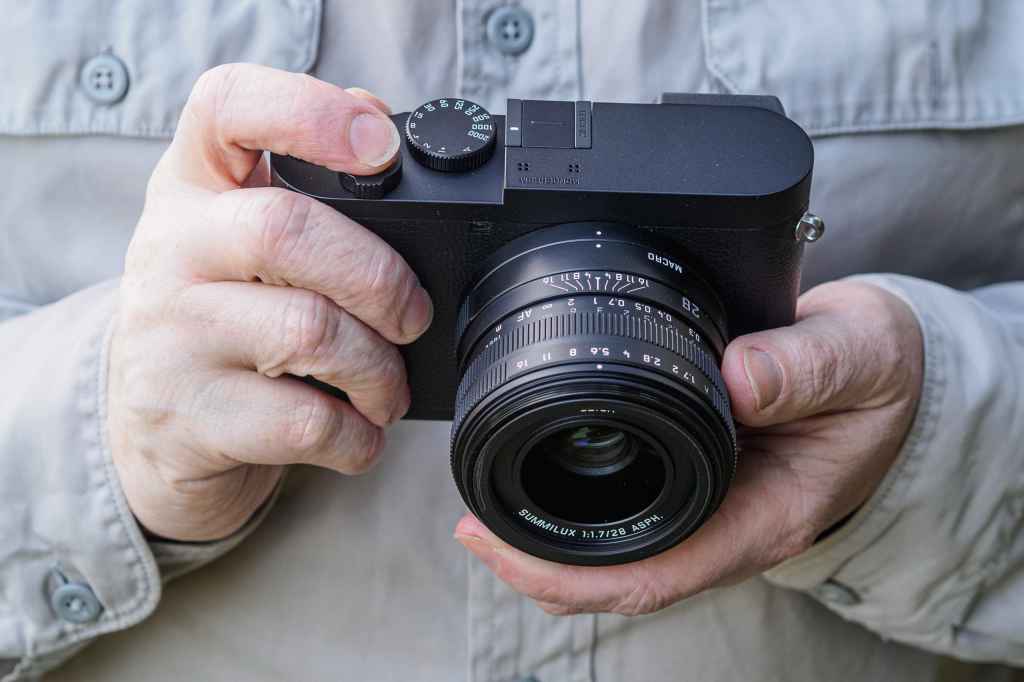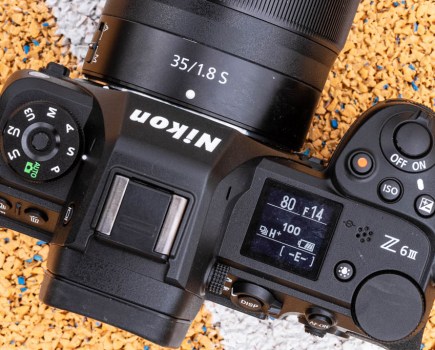Ah, the best Leica cameras. Expensive, yes. But there’s something undeniably and classically cool about that red dot and the sleek, perfectly engineered cameras that wear it. The brand has earned and retained its cachet among serious photographers for decades. For other high-end options by other brands, check out our guide to the best full-frame mirrorless cameras.
We review Leica cameras just as we do new releases from other brands. We know well that their prices exclude them to all but the most well-heeled enthusiasts – meanwhile, the rest of us aspire to own one, as the experience of shooting with a Leica is quite simply like nothing else. Whether a compact Q camera, a digital rangefinder like the M11, or an L-mount mirrorless model, they all ooze style and quality.
The list below includes not just the best new Leica cameras, but also a few previous-generation options that have undergone price reductions. All these are cameras that have been tested and highly rated by our review team – so, let’s get a closer look.
The best Leica cameras: quick list
For the best deal on Leica cameras: not only will you find the best Leica camera, but also some of the best camera deals, as our ‘Buy now’ buttons are set to automatically take you to the best prices from trusted retailers. There is a list of other retailers below each camera, so you can find the right deal for you.
- Best Leica rangefinder: Leica M11 – buy now
- Best Leica compact: Leica Q3 43– buy now
- Best Leica mirrorless: Leica SL3 – buy now
- Best Leica for black & white: Leica M11 Monochrom – buy now
- Best Leica compact zoom: Leica D-Lux 8 – buy now
The best of the rest:
- Leica SL2 – buy now
- Leica SL2-S – buy now
- Leica M10 Monochrom – buy now
- Leica M6 – buy now
- Leica Q2 – buy now
- Leica Q2 Monochrom – buy now
Why you can trust Amateur Photographer
We spend many hours testing every product we recommend, in detail, in a variety of situations and shooting scenarios, and only use experts for our reviews, so you can be sure that you’re getting the best products. Find out more about our expert writers.
Best overall
Best Leica rangefinder: Leica M11
Amateur Photographer verdict
Resembling the previous M10 rangefinder, on the inside the Leica M11 is in fact a complete redesign; with clever variable-resolution shooting and a sublime rangefinder experience.- Excellent image quality
- Good battery life
- Beautiful design and ergonomics
- Manual focus only
At a glance:
- Rangefinder
- 60MP full-frame BSI-CMOS sensor
- DNG raw at 60MP, 36MP or 18MP
- 4.5 fps continuous shooting
- $9,840 / £7,900 (body only)
For lovers of minimalism in camera design, the Leica M series is a classic. The latest digital iteration of a series that harks back all the way to 1955 brings a number of number of innovations in a sleek and traditional body.
It has a 60 megapixel sensor – great, but which can eat up a lot of processing power. To speed things up a little, you can output raw files at 36 or 18 megapixels instead, allowing you to choose the best resolution for a situation.
We found in our review that, like other M series cameras before it, the M11 uses an ultra-robust design which is simply lovely to look at; as well as to use. Using a rangefinder takes a bit of getting used to – manual focusing via the viewfinder doesn’t always yield perfect results, particularly if you’re used to shooting with more modern techniques, but it’s special when you nail it.
We found that the M11 produced superb images, and if you really do want the best of the best – and have the budget to go with it – this camera surely sits at the top of many a photographer’s wish list.
Two notable stablemates from the M11 lineup are the recent (September 2024) Leica M11-D with a large ISO dial replacing the rear LCD screen, and the Leica M11-P: the firm’s first camera with Content Credentials hardware added.
Read our full Leica M11 review.
Best Leica compact
Best Leica compact: Leica Q3 43
Amateur Photographer verdict
The addition of a superb 43mm f/2 lens elevates the Leica Q3 43 to new heights. It’s a stunning camera that produces sensational image quality – at a price.- Superlative new 43mm f/2 lens
- Superb raw image quality
- Extremely robust build
- Engaging dial-led controls
- Excellent viewfinder
- Leica Looks make for more interesting JPEGs
- Screen only tilts up and down
- JPEG output still isn’t great
At a glance:
- 60.3MP full-frame sensor
- 28mm f/1.7 optically stabilised lens
- ISO 50-100,000
- Up to 15 fps shooting
- $7,380 / £5,900
The original Leica Q3, which like its predecessors sported a 28mm f/1.7 lens, was extremely impressive; we considered it the best compact camera around. Now the firm has decided to mix things up, with this version that sports a brand-new 43mm f/2 lens – the Leica Q3 43.
Don’t be perturbed by that odd-sounding 43mm focal length. Why not something more familiar, like 35mm or 50mm? The idea is that 43mm is equal to the diagonal of the sensor, and lenses of this ilk bring a particularly natural-looking perspective to images. Many photographers – including our own – prefer lenses in the 40-45mm region to either 35mm or 50mm.
Shutter speeds are available from 120sec to 1/2000sec using the in-lens mechanical shutter, extending to 1/16,000sec with the electronic shutter. For long exposures, you get a handy ‘T’ mode, which is far more convenient than the usual Bulb option; one press of the button starts the exposure and a second ends it.
Leica also exploits the 60MP sensor to offer a genuinely useful Digital Zoom that crops into the image to match familiar focal lengths. The image area is indicated by a frameline in the viewfinder, with the camera saving both a cropped JPEG and full-size raw file alongside (with the crop embedded into its metadata). You get 60mm, 75mm, 90mm, 120mm and 150mm options giving 31MP, 20MP, 14MP, 8MP and 5MP files, respectively. You can see how these look in the slideshow below.
The Q3 43 should be better suited to subjects such as environmental portraiture, street shooting, and general family photography. But the original Q3 would arguably be the better choice for landscapes, cityscapes, and travel photography.
Read our full Leica Q3 43 review.
Best Leica mirrorless
Best Leica mirrorless: Leica SL3
Amateur Photographer verdict
The best Leica mirrorless camera you can buy, the Leica SL3 brings once again that 60MP resolution, along with an amazingly robust build quality and well-designed UI.- Superb image quality
- Bomb-proof build
- Phase-detect autofocus
- Battery life not the best
- Some odd control placements
At a glance:
- Mirrorless
- 60MP full-frame sensor
- ISO 50-100,000 (extended)
- Up to 15 fps continuous shooting (5fps with C-AF)
- 8K 30fps video shooting
- $7,485 / £5,920 body-only
Powerful enough to stand toe-to-toe with the biggest and best full-frame cameras (good news, since it’s more expensive than any of them), the Leica SL3 packs in the same 60MP sensor with phase-detect autofocus as the Leica Q3. This means it’s got that same brilliant blend of high speed and outstanding image quality. Its mirrorless body is built like a tank, shaped like an SLR and rated to IP54 for its weatherproofing and water protection (it’ll handle spray but not submergence).
Its various upgrades and features make the SL3 a more serious player in the pro mirrorless market than its predecessors in the SL series ever were. Yes, the Sony A7RV can do all the same stuff for less money, but the SL3 is markedly more pleasant to use. The Nikon Z9 may be better for action, but there’s a certain prestige in turning up to a job holding a Leica. The L-mount lens selection is excellent now and, given that the SL3 can also use M-mount and legacy R-mount Leica lenses, you’ll never lack quality glass.
Read our full Leica SL3 review.
Best for B&W
Best Leica for black & white: Leica M11 Monochrom
Amateur Photographer verdict
Leica’s best monochrome-only camera, this offers shooters a truly unique experience. Cool, classic black & white via an interface that’s all 21st century.- Superb high-resolution imagery
- 256GB of built-in storage
- Electronic shutter and highlight metering
- Expensive, even for Leica
- No video functionality
At a glance:
- Rangefinder (B&W only)
- 60MP full-frame back-illuminated CMOS sensor
- ISO 125-200,000 range
- Rangefinder manual focusing
- 256GB of internal storage
- $10,160 / £8,300 body-only
Leica may have seemed bonkers at first when it announced it would be producing expensive versions of its digital cameras with no colour filter at all – restricting them to producing black & white imagery. However, the concept has proven popular with a certain type of shooter, and the Leica M11 Monochrom is the best example yet. Those willing and able to drop $9,495 / £8,300 on a monochrome-only camera will be pleased to know that this one is a triumph.
Ultimately, a thing like this lives or dies on its image quality, and the superb 60.4MP resolution produced by the Leica M11 Monochrom is knockout, drop-dread gorgeous. Like the Q3 and M11 classic, the resolution can be dropped down if you don’t need all those pixels – though Leica has incorporated 256GB of internal storage to help matters. The camera can shoot up to ISO 200,000, and its performance even at higher settings is commendable. An advantage of black & white is that image noise is more likely to look like stylish film grain; such is the case here.
Read our full Leica M11 Monochrom review.
Best MFT Leica
Leica D-Lux 8
Amateur Photographer verdict
Traditional control dials, and a multi aspect ratio sensor make the D-Lux 8 a joy to use and create with. Its JPEGs can be dull; best results obtained from raw.- Large aperture zoom lens
- Unique multi-aspect ratio sensor
- Much improved viewfinder over D-Lux 7
- User-friendly DNG-format raw recording
- Non-tilting rear screen
- Uninspiring JPEG colour
- Minimal handgrip
At a glance:
- $2,790 / £1,450
- 24-75mm equivalent f/1.7-2.8 lens with OIS
- 17MP Four Thirds multi aspect-ratio sensor
- ISO 100-25,000
- Up to 11fps shooting
- 2.36m-dot, 0.74x OLED viewfinder
- 3in, 1.84m-dot LCD touchscreen 4K 30p video recording
The D-Lux 8 employs a smaller Four Thirds type sensor with a clever multi-aspect ratio design, joined by a 24-75mm equivalent zoom with a bright f/1.7-2.8 aperture. It has traditional photographer-friendly controls for the main exposure settings, and a corner-mounted viewfinder in a flat-bodied ‘rangefinder-style’ design, which make it a joyous thing to use.
This camera utilises its 20MP Four Thirds sensor in a unique way. It never uses the entire sensor area to create images, but instead crops in to offer a range of aspect ratios with the same diagonal angle of view. See how this works in our full review of the Leica D-Lux 8.
The zoom lens provides a good level of compositional flexibility, and our reviewer really appreciated changing aspect ratios via a switch on the lens. It’s great to see an improved viewfinder, too, which fixes one of our biggest gripes with the LX100 II/D-Lux 7.
Best for professionals
Leica SL2
Amateur Photographer verdict
It may be very similar to a Panasonic Lumix S1R – but that’s no bad thing. If you don’t mind paying a Leica premium, the SL2 is a lovely camera to use. You can’t argue with the quality it produces.- Superb image quality
- Solid, robust build
- Excellent viewfinder
- Big, heavy
- Fixed screen
- Some handling awkwardness
At a glance:
- Mirrorless
- 47.3MP full-frame BSI CMOS sensor
- ISO 100-50000
- 20fps continuous shooting
- $3,980 / £3,999 (body only)
- IBIS – In-body image stabilisation
Released under the umbrella of the “L Mount Alliance” between Leica, Panasonic and Sigma, the SL2 has a lot of similarities with the Panasonic S1R.
As such, you get a high-resolution 47.3 megapixel full-frame sensor and a swathe of other useful specifications including up to 20fps shooting (via the electronic shutter), a superb viewfinder and 5-axis in-body image stabilisation.
This is a big and chunky mirrorless camera that feels like a solid workhorse. In our review of the SL2, we noted that it was bulkier and heavier than many of its mirrorless rivals, being more akin to a pro-level DSLR in design. That might be a good thing if you’re looking for something that can withstand some heavy abuse, while others might find it too cumbersome.
We were generally impressed by the SL2’s autofocus performance, while image quality we found to be ‘phenomenal’. There’s a lot to like about the SL2, but if you’re short on budget, it’s worth considering whether the Panasonic S1R is the wiser investment.
Read our full Leica SL2 review.
Best all-rounder
Leica SL2-S
Amateur Photographer verdict
A lighter, more video-focused variant on the SL2, the Leica Sl2-S shares a lot of DNA with the Panasonic Lumix S1. Its handling takes some getting used to.- Solid, robust build
- Excellent viewfinder
- Gorgeous images
- Unwieldy in use
- Controls are awkward
- Fixed screen
At a glance:
- Mirrorless
- 24.6MP full-frame BSI CMOS sensor
- ISO 50-100000
- 25fps continuous shooting
- $5,195 / £4,340 (body only)
Like the look of the Leica SL2 but fancy more of an all-rounder and slightly more affordable? Step forward the SL2-S.
Unsurprisingly, as part of the L Mount alliance, this is another model which shares a lot in common with a Panasonic offering, the S1. With its 24.6MP sensor, it’s pitched as more of a video/photo hybrid and can also achieve other useful specifications such as (up to) 25fps shooting.
The SL2-S uses the same body design as the SL2, so again, this is a bulky and chunky affair, which some will love and others will loathe. In our review we were particularly impressed with the “stunning” viewfinder, while the screen is impressively responsive to touch – it’s a bit of a shame it’s fixed though, especially if you do want to use the camera for video work.
We found that the SL2-S’s autofocus was decent, though we probably wouldn’t select this camera as the best option for sports and action photography (we’d look to other brands). But it’s a good all-rounder for those who like to shoot a bit of everything. Image quality is great, but we found that the best results are seen when shooting in raw.
Again, you might want to question whether you’d be better off with the Panasonic S1 if this kind of model appeals to you, but that little red dot can be extremely tempting.
Read our full Leica SL2-S review.
Best M11 alternative
Leica M10 Monochrom
Amateur Photographer verdict
The previous generation of monochrome-only rangefinder, Leica’s M10 Monochrom still impresses with its to-die-for image quality. Prices have come down on the used market, too.- Superb image quality
- Large, clear viewfinder
- Good second-hand prices (in UK)
- Lower-res than M11
At a glance:
- Rangefinder
- 40.8MP full-frame monochrome CMOS sensor
- ISO 160-100000
- 4.5fps continuous shooting
- $8,000* / £6,859 (body only), £4,800 used
* scarce in the USA at time of publishing
Designed specifically for photographers who want the best possible black and white image quality, the Leica M10 Monochrom is a beautiful camera inside and out. It’s cheaper than the newer M11 Monochrom, so is worth considering if that camera is out of your budget. Prices have come down quite a bit on the used market, especially in the UK, where it can be picked up for about half the price of the newer model.
In our review of the Leica M10 Monochrom, we found it capable of delivering exceptional image quality: with a sensor that is stripped of colour being better suited to detail, higher dynamic range and superior performance in high ISO, low light situations.
The body design and quality of build also impressed us in our review, and although shooting with a rangefinder is perhaps an acquired taste, using the M10 Monochrom is overall a very pleasant experience.
Leica cameras are already designed for a niche market, and this one even more so – but boy does it produce beautiful results. If you’ve got this kind of cash to spend it’ll almost certainly bring you a fantastic amount of joy.
Read our full Leica M10 Monochrom review.
Best Leica for street photography
Leica M6
Amateur Photographer verdict
It’s hard to get hold of – but the Leica M6 is a wonderful way to get that analogue-shooting experience. If you see one available and you want it, our advice is not to delay!- Traditional analogue controls
- Stylish look
- Brilliant viewfinder
- Can be hard to find
- Film is pricey these days
At a glance:
- Analogue rangefinder
- 35mm film
- Optical viewfinder, 0.72x magnification
- 1s-1/1000s shutter speeds
- $6,415 / £4,990 (body only)
Pretty much every Leica evokes the nostalgic in all of us, but nothing turns back the clock quite like the magic of analogue.
Leica brought back its iconic M6 film camera in October 2022, and it’s proved to be incredibly popular ever since – so much so that there’s often a waiting list to get hold of one.
Based heavily on the original M6, new features include a redesigned top cover which has been milled from solid brass and enhanced with an abrasion-resistant lacquer. Fancy. The viewfinder has also been optimised, the light meter has been improved and there’s now a useful battery warning indicator.
This is a camera that doesn’t get cheap – of course it doesn’t, it’s a Leica, but if you want the same kind of experience as the street photography masters of old, then nothing quite beats it.
Best for travel
Leica Q2
Amateur Photographer verdict
It may be somewhat eclipsed by the Leica Q3, but the Q2 is still a brilliant compact in its own right, delivering an addictive shooting experience and first-rate images.- Fantastic image quality
- Great shooting experience
- Excellent viewfinder
- Q3 is better in all ways
At a glance:
- Premium compact
- 47.3MP full-frame sensor
- Fixed 28mm f/1.7 lens, digital zoom up to 75mm
- ISO 50-50,000
- from around $4,550 / £3,500
Boasting a range of features including a super-high resolution 47.3 megapixel full-frame sensor, the Q2 may be a slightly niche choice thanks to its fixed 28mm f/1.7 lens, but the quality of the outputted images is simply superb.
We’re also in love with the design, which takes the classic rangefinder approach, with an electronic viewfinder placed in the corner of the body. The upside here is that it’s not a rangefinder, so you don’t have to worry about fiddling around with manual focusing if you’d rather just let the camera get on with it.
The Q2 would make for a fantastic travel, street and everyday camera. Despite its fixed lens (that high resolution sensor means you get a very usable digital zooming options), it’s stylish, discreet and produces knockout imagery.
Read our hands-on Leica Q2 review.
Best older B&W compact
Leica Q2 Monochrom
Amateur Photographer verdict
Until the Q3 Monochrom comes along, this is the best bet for B&W enthusiasts who want that sleek Leica Q compact experience.- Superb image quality
- Great viewfinder
- Attractive JPEG toning options
- Fixed screen
- Still expensive for what it is
At a glance:
- Premium compact
- 47.3MP full-frame monochrome sensor
- Fixed 28mm f/1.7 lens, digital zoom up to 75mm
- ISO 100 – 100,000
- 10fps continuous shooting
- OLED viewfinder, 3.68m-dot
- 1.04m-dot, 3-inch fixed touchscreen
- $6,630 / £5,300
Just as Leica produced a black and white version of its M series camera, it did so with the Q2 Monochrom.
The idea is, once again, that you get all the benefits of a particular type of body, but with a sensor that is specifically designed for monochrome shooting and therefore capable of producing better imagery than shooting in colour and later converting.
Most of the specification of this camera is shared with the Q2 on which its based, including the same 28mm f/1.7 fixed lens with digital zooming options and the same viewfinder and screen.
However, by stripping out the colour from the 47.3 megapixel full-frame sensor you get distinct advantages for dynamic range, detail, and low-light shooting.
In our review of the Q2 Monochrom, we were impressed by its intuitive controls, customisation options and, naturally the superb image quality it produces.
This is, even by Leica standards, a niche option for a camera, but if B&W is your forte and you have the money to spend on it, you certainly won’t be disappointed.
Read our full Leica Q2 Monochrom review.
How to buy the best Leica camera
When considering which Leica camera is the best option for you there are a number of things you might want to consider, including the following:
Type of camera
Leica currently manufacturers a range of different types and styles of cameras.
As well as offering the latest mirrorless technology in the shape of its SL range, there’s also rangefinder cameras which are a traditional technology which won’t suit everybody. With these models, you can only manually focus, and generally have to get used to shooting in a certain way through an optical viewfinder. Leica also offers premium compact cameras, film cameras and even bridge-style cameras.
With such a range of camera types, it pays to do some research on each before you commit to buying one – especially if you’ve never invested in a Leica before.
Autofocusing or manual focusing
What it might simply come down to is your preferred way of focusing. If you want to shoot rapidly moving action, manual shooting isn’t generally preferred by modern photographers. As such, standard mirrorless cameras or even the premium compact options from Leica will probably offer you the best experience.
On the other hand, manual focusing is favoured by some for its more slower, more considered approach. You also have more complete control over very aspect of the shooting experience, which can be appealing for many.
Analogue or digital
Most of us shoot digitally these days, and indeed the vast majority of the cameras on this list are digital offerings.
However, there’s still something very special about shooting film with analogue cameras. Plenty of analogue Leica models are available, particularly in the second-hand market. Interestingly, Leica is just about the only major or big manufacturer that still announces new film models; the Leica M6 came out in November 2022.
Fixed lens or interchangeable
If you’re keen for maximum flexibility, then one of Leica’s interchangeable lens cameras makes the most sense. That means an SL or M series if you’re picking up a new Leica for the first time. Both offer a good range of compatible lens options, with the SL cameras also being able to accept Sigma and Panasonic lenses as part of the “L Mount Alliance”.
On the other hand, using a fixed lens is a lot more straightforward. That’s where cameras such as the Q2 range or the D-Lux range come in. Take a look at all the options and think about what will work best for you.
Budget
While it’s true that “Leica” and “low cost” aren’t usually seen in the same sentence, if you want the Leica experience without the high price tag, there are some options you can look towards. For example, the D-Lux 7 is the cheapest model on our list, but you still get that prominent red badge. There’s also different models within the various Leica ranges which could save you some cash if you opt for the older or less advanced versions (SL2 vs SL2-S for example).
How we test Leica cameras
We test Leica cameras primarily by using them to take photographs and video in a wide range of real-world situations. We evaluate their control layouts and handling, and the usability of their viewfinders and screens. We assess their autofocus across a range of different subjects and shooting scenarios and check their continuous shooting capabilities.
We also examine the effectiveness of their image stabilisation systems. Last but by no means least, we critically evaluate the image quality, in both JPEG and raw, including resolution, high-ISO noise, and dynamic range. We then take all these factors into account, along with such things as portability and lens systems, when giving our final conclusion and score. You’ll find the full breakdown of how each camera has performed in our full reviews.
Related articles:
- Best Camera For Street Photography
- The best compact 35mm film cameras with autofocus
- Best cameras for black and white photography

